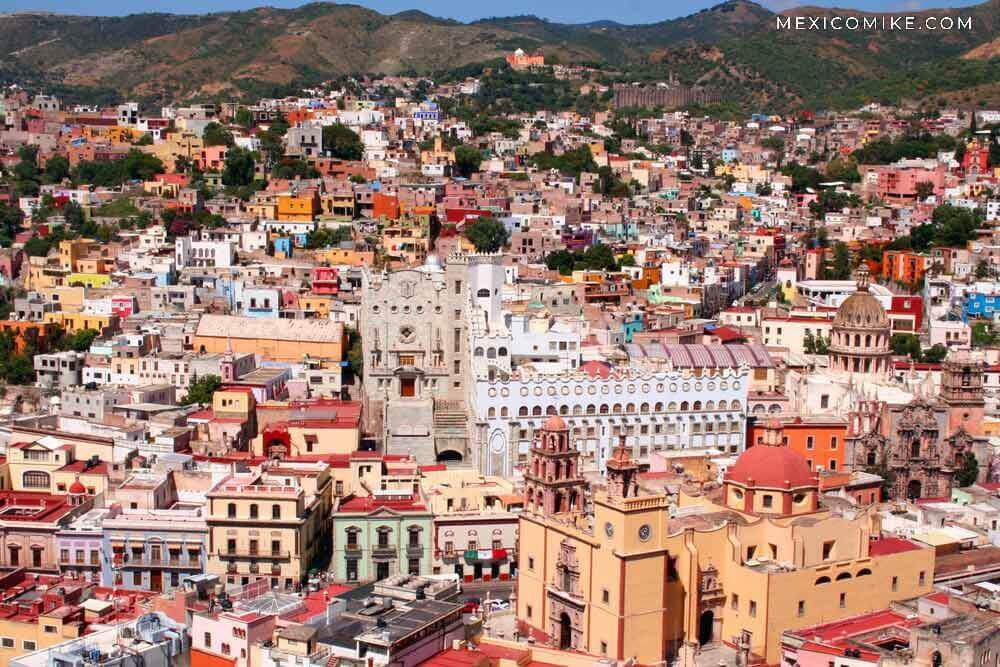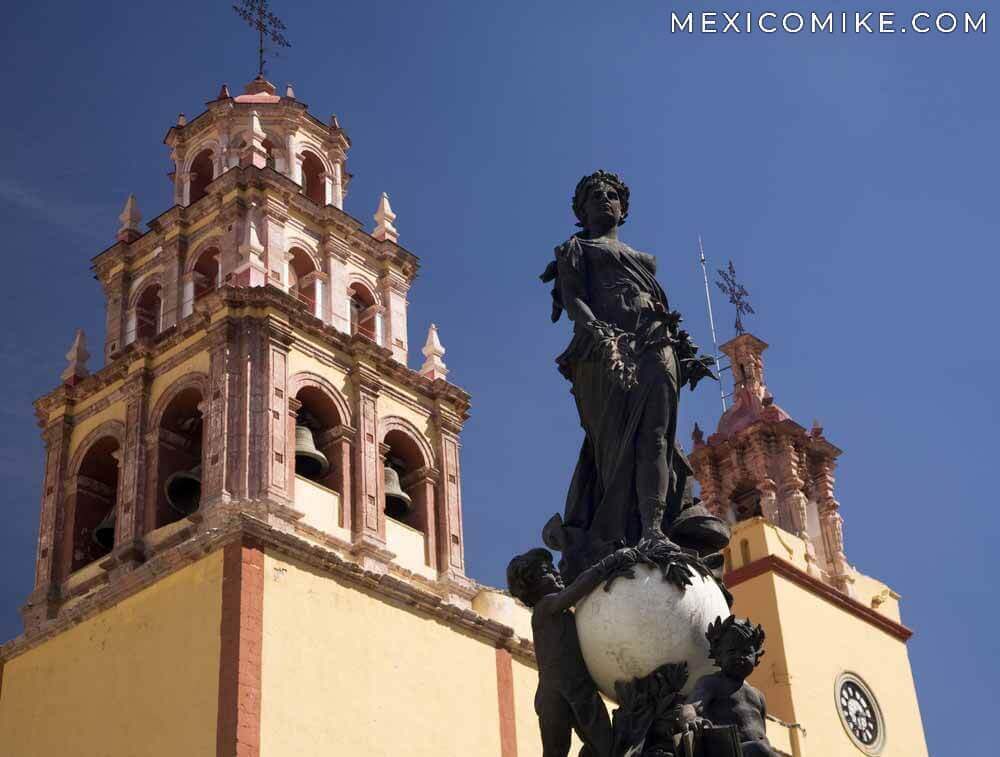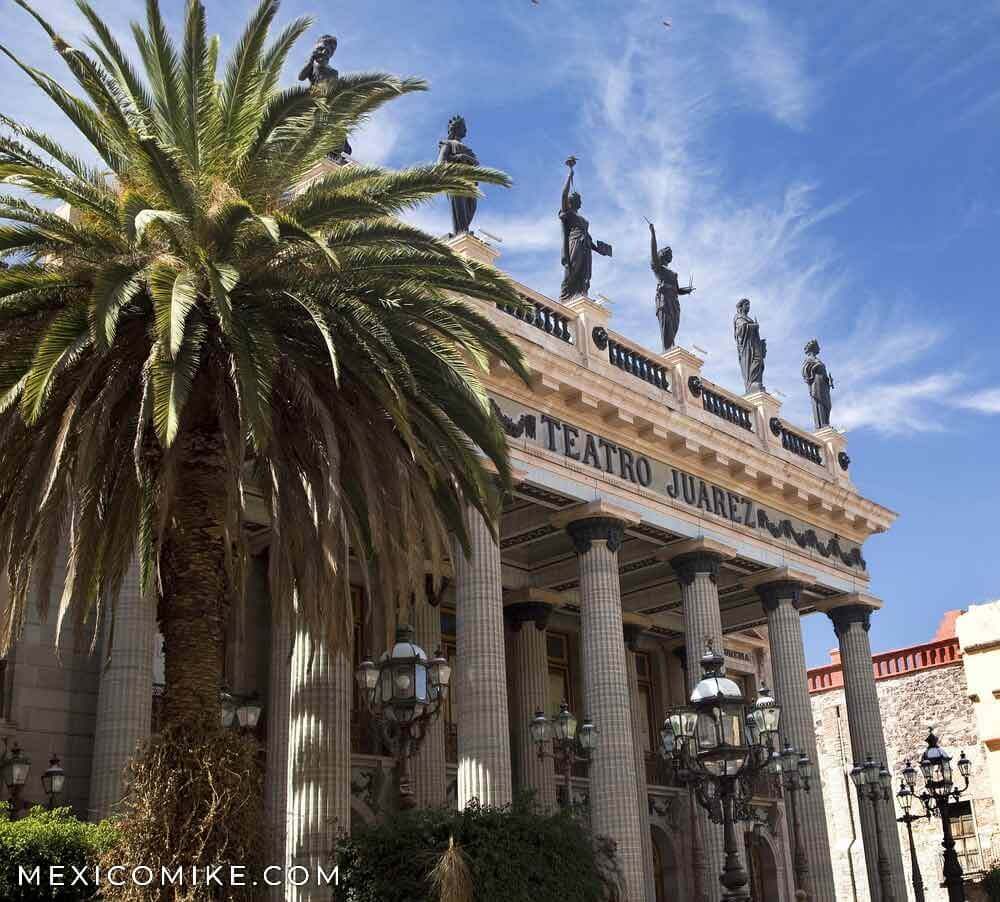The centrally located state of Guanajuato borders the Mexican states of San Luis Potosi, Jalisco, Queretaro, Zacatecas, and Michoacán. The state’s capital is Guanajuato; however, its largest city is Leon. The state is famous for its annual theatre and arts festival called Festival Internacional Cervantino and is also well-known for its cultural and historical attractions.

Interesting Facts on Guanajuato
Guanajuato has an area of 11,818 square miles as well as forty-six municipalities. The state is home to a population of 5,575,128 people. Mining and agriculture make up the backbone of Guanajuato’s economy, but some manufacturing is also part of the state’s prosperous industry. Aside from the capital, other important Guanajuato cities include Leon, Irapuato, Dolores Hidalgo, and San Miguel de Allende.

Geography and Landscape of Guanajuato
Guanajuato has three distinctive regions made up of the Sierra Madre Oriental mountain range, the Mexican Plateau, and the Trans-Mexican Volcanic Belt. The mountains foresty slopes while the valleys contain both desert plants and pasture lands. The best known geographical area of the state is Bajio; the Lerma River flows through the flatlands of the Bajio along with its tributaries. This region is famous for its orchards where they grow apples, limes, and guavas. Although Guanajuato has considerable surface waters, it also has many underground aquifers in many of its regions. Although mining and farming have taken their toll on the land, 21 sites are now protected. The state’s diverse landscapes are home to a wide array of animals that include armadillo, rattlesnake, puma, and deer.

History of Guanajuato
Because Guanajuato is home to so much water, it was the scene of some of Mexico’s most developed indigenous civilizations. One of the earliest groups to settle in the region was the Chupicurarios who became known for their agricultural practices and their large city known as Chupicuraro. Associated with Toltec peoples, these Chupicurarios influenced the development of civilization throughout the region. Many archaeologists believe that the decline of their cities was due to years of drought. By the eleventh century A.D., nomadic groups like the Chichimecas entered the area. These semi-nomadic people were far more warlike and less dependent on agriculture; they lived in smaller settlements and did not develop large cities as earlier groups of Guanajuato had.
The Spanish came to the area in 1522 and began to settle. They were after the gold and silver. Because the Spanish could not subjugate most of the indigenous population that had moved into more inaccessible areas of the state, they relied on the importation of the African slaves. While haciendas of the state eventually flourished, most of the population was poor.
The seeds of the War for Independence were sewn in Guanajuato.
From his church pulpit, Father Miguel Hidalgo called for the overthrow of Spanish rule. Fighting occurred in the state at both the beginning and end of the war. After Mexico won its independence, Guanajuato achieved statehood in 1823. Two major battles were fought in Guanajuato during the Mexican Revolution, but political turmoil broiled in parts of the state even after the war was over. Once the Institutional Revolutionary Party was installed, however, the political situation became stable for most of the rest of the twentieth century.
Food in Guanajuato
Tamales, carnitas, and pozole are Guanajuato’s cuisine. Famous for its lush variety of flavors, traditions, and even fusions. Since the time of the Franciscans, wheat has been a primary staple in the food here. Many types of vegetables and fruits grown locally make their way into various dishes. Some of Guanajuato’s most popular dishes include Miners’ Enchiladas. These are made with ranchero cheese, chicken, and guajillo chile peppers. Chile Relleno (a stuffed poblano pepper); and lamb and goat barbecue. The state is also famous for its fruit-based candies, delicious sorbets, and cream and sugar pastries.
The Capital City: Guanajuato
Situated in a mountain valley, the city of Guanajuato is well-known for its winding and narrow streets. The city became prosperous during the Colonial Era for its nearby silver mines. Its colonial past is part of its current charm and attracts many tourists. While the capital also beckons many visitors during its Festival Cervantino, it is home to many cultural attractions like its Main Plaza, the Basílica Colegiata de Nuestra Señora, and the University of Guanajuato which hosts many programs and events popular with visitors.

Other Things to See and Do
Church and Statue of Father Miguel Hidalgo: Located in the city of Dolores Hidalgo, the church and statue of Miguel Hidalgo y Castillo, a leader of the Mexican War for Independence, are some of the state’s most popular historical attractions.
Chupicuaro: One of Mesoamerica’s older sites, this archeological attraction on the Lerma River. It is a well-studied site and continues to attract historians and academics from around the world as well as interested tourists.
Cuitzeo Lagoon: One of the region’s most important bodies of water, the lagoon provides livelihood and sustenance for thousands of people. Its picturesque beauty attracts many to the region which borders the state of Michoacán.
Juarez Theater: One of the most recognizable landmarks of the capital city, the Juarez Theater boasts a stunning façade comprised of twelve columns. It is the famous backdrop for the Festival Cervantino.

San Miguel de Allende: Located in eastern Guanajuato, the city is a popular destination. Its historic center and the Sanctuary of Atotonilco are UNESCO World Heritage Sites. It contains a wealth of landmarks that make it one of the state’s must-see cities.

The Mummy Museum: One of the capital’s most popular tourist attractions, this museum collects more than one hundred mummies of humans; the state is the only place worldwide where mummification was a natural phenomenon.
Leon: The state’s largest city, Leon boasts many fine attractions such as its Municipal Palace, its main basilica, and its universities. It is also famous for its cycling and vibrant nightlife.

